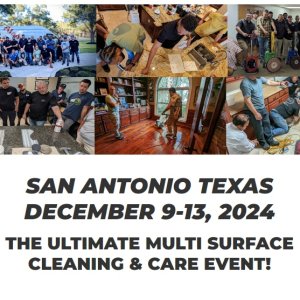Carpet Cleaning Fool
Member
- Joined
- Nov 9, 2008
- Messages
- 1,496
- Name
- George Valliant
Some advice please.
I've been on this job since tuesday. Upstairs apartment had water heater leak that soaked downstairs.
The wetspots are starting to shrink but i'm running into problems with a few walls. So, thought it might be a good idea to drill some holes.
did test drill in a closet by removing the base trim and put a 1/2" hole. Unfortunately, i ran smack into the 2x4 sill plate. so, I drilled above the base trim on the rest of them. I put a couple of 1/2" holes in each wet cavity. Is that bad?
here's todays pics.
Thanks!




All the walls are interior without insulation with the exception of this outside wall with insulation (here's the flir pic and the following jpg shows the two holes i drilled)


The trouble spots are still maxing out my meter

Am i doing this right? What advise can you give me?
I've been on this job since tuesday. Upstairs apartment had water heater leak that soaked downstairs.
The wetspots are starting to shrink but i'm running into problems with a few walls. So, thought it might be a good idea to drill some holes.
did test drill in a closet by removing the base trim and put a 1/2" hole. Unfortunately, i ran smack into the 2x4 sill plate. so, I drilled above the base trim on the rest of them. I put a couple of 1/2" holes in each wet cavity. Is that bad?
here's todays pics.
Thanks!
All the walls are interior without insulation with the exception of this outside wall with insulation (here's the flir pic and the following jpg shows the two holes i drilled)
The trouble spots are still maxing out my meter
Am i doing this right? What advise can you give me?


